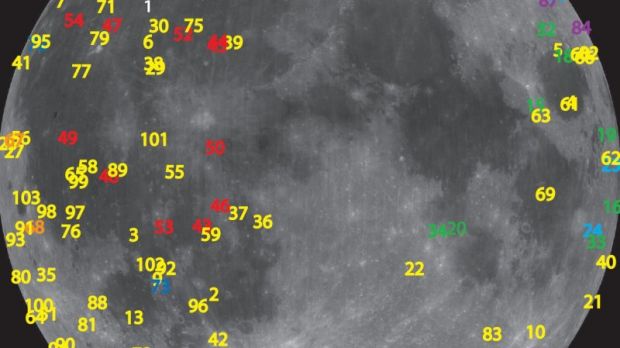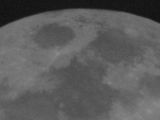Only two and a half years ago, if you had claimed to have seen a flash of light on the surface of the Moon, you would have been quickly catalogued as a lunatic. I guess NASA has a lot of lunatics working for it, as it claims that since 2005, it has observed at least 100 flashes of light being produced on the surface of the Moon.
"They're explosions caused by meteoroids hitting the Moon. A typical blast is about as powerful as a few hundred pounds of TNT and can be photographed easily using a backyard telescope," says Bill Cooke from NASA's Meteoroid Environment Office at the Marshall Space Flight Center.
The short video file in the lower part of the page presents just one of the hundreds of explosions taking place on the lunar surface during a meteorite impact. The particular meteorite which generated this flash of light is believed to have come from a former comet known as 2003 EH1. Similarly to the Earth, the Moon passes through the same regions of space filled by debris left behind by the passing of asteroids or comets, which produce meteor showers in the planet's atmosphere. However, the Moon has no significant atmosphere and any meteoroids captured by its gravitational field reach the surface relatively unharmed, where they release an incredible amount of energy in the form of an explosion.
"We started our monitoring program in late 2005 after NASA announced plans to return astronauts to the Moon. It seemed like a good idea to measure how often the Moon was getting hit. Almost immediately, we detected a flash," says lead investigator Rob Suggs from the Meteoroid Environment Office.
The first flash was detected on November 7, 2005, in the Mare Imbrium and was create by a fragment coming from the Encke comet. The flash on light had a magnitude of 7, meaning its was too faint to be seen with the naked eye, however the 10-inch telescope spotted it immediately.
Meteoroids hit the lunar surface at a speed exceeding 48,000 kilometers per second. "At that speed, even a pebble can blast a crater several feet wide. The impact heats up rocks and soil on the lunar surface hot enough to glow like molten lava--hence the flash," said Cooke.
In periods of the year coinciding with the arrival of the Quadrantids or Perseids meteor showers, lunar flashes can rise to rates as high as one per hour, and although the impact rate decreases as the Moon exits the stream of debris, it would never reach zero. "Even when no meteor shower is active, we still see flashes," Cooke explained.
The same is available for Earth as well. If you are lucky enough, in a clear, dark night sky, you can see a few meteors per hour, even though there is no meteor shower active at the time. In fact, on the Moon occur two times more random meteorite impacts that any determined by the passing through a debris stream. "That's an important finding. It means there's no time of year when the Moon is impact-free," said Suggs.
Anyway, any manned mission sent to the Moon in the near future is danger free, since the chances of being hit by such an object are extremely low. Building a lunar outpost, however, is another matter; the large surface area of the structure and the long exposure to such events greatly increases the odds of getting hit by such a rock.
Additionally, these impacts produce other debris, which are thrown in all directions. In gravitational fields such as that of the Moon, a projectile could easily reach bullet-like speeds, and may produce significant damage to any object standing in its way. "Secondary particles smaller than a millimeter could pierce a spacesuit," Cooke added.
The travel distance of these secondary particles is now studied by Cooke and Suggs at the Vertical Gun Range at NASA's Ames Research Center by firing artificial meteoroids at simulated moon dust. In the meantime, the Moon continues to flash.

 14 DAY TRIAL //
14 DAY TRIAL // 
